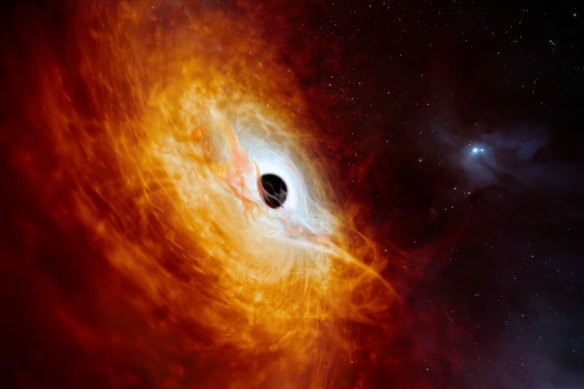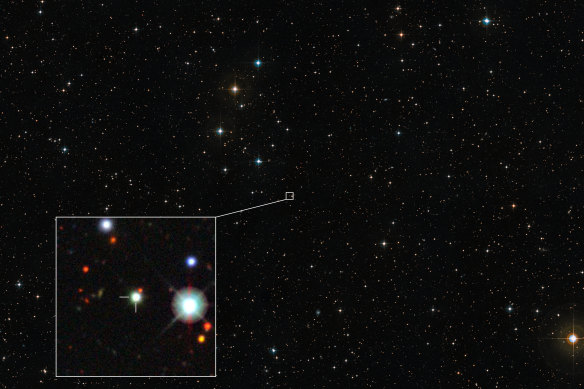
Australian astronomers have discovered the most luminous object in the universe – a ravenous, chaotic, fast-growing black hole 17 billion times heavier than our sun and 200 trillion times brighter.
Most black holes are dormant and hard to spot because they swallow up light. But this record-breaking black hole, or quasar, is still feeding, enwreathed by a sizzling vortex of matter crackling with lightning bolts as it devours a sun’s worth of cosmic material each day.

An artist’s impression of quasar J0529-4351, the most luminous object in the universe and the fastest-growing black hole ever recorded.Credit: ESO/M. Kornmesser
“This is now the most luminous quasar, the most luminous object in the universe, the fastest-growing black hole of all time,” Associate Professor Christian Wolf, a quasar hunter from the Australian National University and lead author of the research published in Nature Astronomy, said.
The black hole’s colossal gravity crushes surrounding matter into a flared disk. The material rages around the quasar at speeds exceeding 10,000 kilometres per second, and friction discharges in huge lightning bolts that superheat the fiery spiral to tens of thousands of degrees.
“That huge amount of heat glow produces all that luminosity,” Wolf said.
The quasar, dubbed J0529−4351, is seven light years wide. That’s 1½ times longer than the distance from our solar system to Alpha Centauri – the brightest star in “the Pointers” formation near the Southern Cross.

The region of the sky in which the record-breaking quasar J0529-4351 is situated.Credit: ESO/Digitized Sky Survey 2/Dark Energy Survey
Despite their brightness, quasars are hard to spot because they are so distant, rare and hard to distinguish from stars.
Wolf and his team uncovered the quasar by surveying the sky through a 2.3-metre telescope at the ANU Siding Spring Observatory near Coonabarabran, NSW.